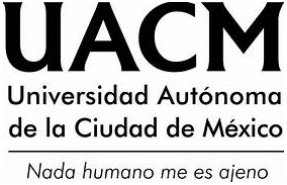VIDEO-VIGILANCIA DEL ESPACIO URBANO: TRÁNSITO, SEGURIDAD Y CONTROL SOCIAL
DOI:
https://doi.org/10.29092/uacm.v7i14.108Palabras clave:
Vigilancia, gubernamentalidad, control social, cuidado social, dispositivos de vigilanciaResumen
En los últimos años, en México, y a escala global, los circuitos cerrados de televisión (CCTV) se han convertido en el modelo más generalizado de vigilancia para los espacios urbanos. Su objetivo es registrar las actividades cotidianas de las personas en su tránsito por la ciudad. Tomando el caso de dos municipios del estado de México, este artículo analiza cómo estas tecnologías de vigilancia permiten una determinada gestión de los espacios de la ciudad, así como diferentes formas de gubernamentalidad de la población. Así, se muestra cómo, en términos de propósito, los CCTV se han transformado, en algunos momentos, de dispositivos de apoyo a la organización del tránsito y la seguridad pública, en instrumentos de control social y político.
Descargas
Citas
AGAMBEN, G. (2007), Qu’est-ce qu’un dispositif?, París: Éditions Payot & Rivages.
ARTEAGA BOTELLO, N. (2007), “An orchestration of electronic survei- llance”, International Criminal Justice Review, vol. 17, núm. 4, Atlanta: Sage Publications, Georgia State University, College of Health and Human Sciences, pp. 325-335.
BECK, U. (1998), La sociedad del riesgo, Barcelona: Paidós. Bigo, D. (2006), “Security, exception, ban and surveillance”, en David Lyon (ed.), Theorizing Surveillance: The Panopticon and beyond, Cullompton, Portland: Willam Publishing, pp. 46-68.
BENNETT C., RAAB, C. y REAGAN, P. (2003), “People and Place: Patterns of Individual Identification within Intelligent Transportation Systems”, en David Lyon (ed.), Surveillance as Social Sorting: Privacy, Risk and Digital Discrimination, Londres: Routledge, pp. 153-175.
CAROL-MAYER, M., FAIRWEATHER, B. y CARSTEN STAHL, B. (2006), “CCTV Identity Management and Implications for Criminal Justice: Some Considerations”, Surveillance and Society, vol. 5, núm. 1, enero, Kingston: Surveillance Studies Network, Queen’s University, pp. 33-50.
COLEMAN, R. (2004), “Watching the Degenerate: Street Camera Sur- veillance and Urban Regeneration”, Local Economy, vol. 19, núm. 3, agosto, Londres: London South Bank University, pp. 199-211.
COLEMAN, R. y SIM, J. (2000), “‘You’ll Never Walk Alone’: CCTV Surveillance, Order and neo-liberal Rule in Liverpool City Centre”, British Journal of Sociology, vol. 51, núm. 4, diciembre, Londres: London School of Economics, pp. 623-639.
DELEUZE, G. y GUATTARI, F. (1989), Mil mesetas: capitalismo y esquizofrenia, Valencia: Pre-Textos.
DENICOLA, L. (2006), “The Bundling of Geospatial Information with Everyday Experience”, en T. Monahan (ed.), Surveillance and Security: Technological Politics and Power in Everyday Life, Londres: Routledge, pp. 243-264.
ERICSON, R. V. (2006), “Ten Uncertainties of Risk-Management Approaches to Security”, Canadian Journal of Criminology and Criminal Justice, vol. 48, núm. 3, junio, Ottawa: Canadian Cri- minal Justice Association, pp. 346-357.
FOUCAULT, M. (2004), Sécurité, territoire, population. Cours au Collège de France. 1977-1978, París: Seuil-Gallimard.
HAGGERTY, K. D. y ERICSON, R. V. (2000), “The Surveillant Assemblage”, British Journal of Sociology, vol. 51, núm. 4, diciembre, Londres: London School of Economics, pp. 605–622.
HERNÁNDEZ, C. (2008), “Instalarán cámaras de seguridad alrededor de Toluca”, El Sol de Toluca, 19 de abril, p. 56.
HIER, S. P., WALBY, K. y GREENBERG, J. (2006), “Supplementing the Panoptic Paradigm: Surveillance, Moral Governance and CCTV”, en David Lyon (ed.), Theorizing Surveillance: The Panopticon and beyond, Cullompton, Portland: Willam Publishing, pp. 230-244.
LYON, D. (1994), The Electronic Eye: the Rise of Surveillance Society, Mi- nnesota: University of Minnesota Press.
____________ (2001), Surveillance Society, Philadelphia: Open University Press.
____________ (2007), “Surveillance, Security and Social Sorting: Emerging Research Priorities”, International Criminal Justice Review, vol. 17, núm. 3, Atlanta: Georgia State University, College of Health and Human Sciences, pp. 161-170.
MARQUIS, G. (2003), “Private Security and Surveillance: from the ‘Dossier Society’ to Database Networks”, en David Lyon (ed.), Surveillance as Social Sorting: Privacy, Risk and Digital Discri- mination, Londres: Routledge, pp. 226-248.
MARX, G. T. (1988), Undercover: Police Surveillance in America, Los Angeles, CA: University of California Press.
NORRIS, C. (2003), “From Personal to Digital: CCTV, the Panopticon, and the Technological Mediation of Suspicion and Social Control”, en David Lyon (ed.), Surveillance as Social Sorting: Privacy, Risk and Digital Discrimination, Londres: Routledge, pp. 249-281.
NORRIS, C., MORAN, J. y ARMSTRONG, G. (eds.) (1998), Surveillance, Closed Circuit Television and Social Control, Aldershot: Ashgate.
PHILIPS, D. y CURRY, M. (2003), “Privacy and the Phenetic Urge: Geodemographics and the Changing Spatiality of Local Practice”, en David Lyon (ed.), Surveillance as Social Sorting: Privacy, Risk and Digital Discrimination, Londres: Routledge, pp. 137-152.
Publicado
Número
Sección
Licencia
Esta revista está bajo una licencia Creative Commons México 2.5. Está permitida la reproducción y difusión de los contenidos de la revista para fines educativos o de investigación, sin ánimo de lucro, siempre y cuando éstos no se mutilen, y se cite la procedencia (Andamios, Revista de Investigación Social) y al autor. Los derechos patrimoniales de los artículos publicados en Andamios, Revista de Investigación Social son cedidos por el(los) autor(es) a la Universidad Autónoma de la Ciudad de México una vez que los originales han sido aceptados para que se publiquen y distribuyan tanto en la versión impresa como electrónica de la revista. Sin embargo, tal y como lo establece la ley, el(los) autor(es) conserva(n) sus derechos morales. El(los) autor(es) recibirá(n) una forma de cesión de derechos patrimoniales que deberá(n) firmar una vez que su original haya sido aceptado. En el caso de trabajos colectivos bastará la firma de uno de los autores, en el entendido de que éste ha obtenido el consentimiento de los demás. Los autores podrán usar el material de su artículo en otros trabajos o libros publicados por ellos mismos, con la condición de citar a Andamios como la fuente original de los textos.


